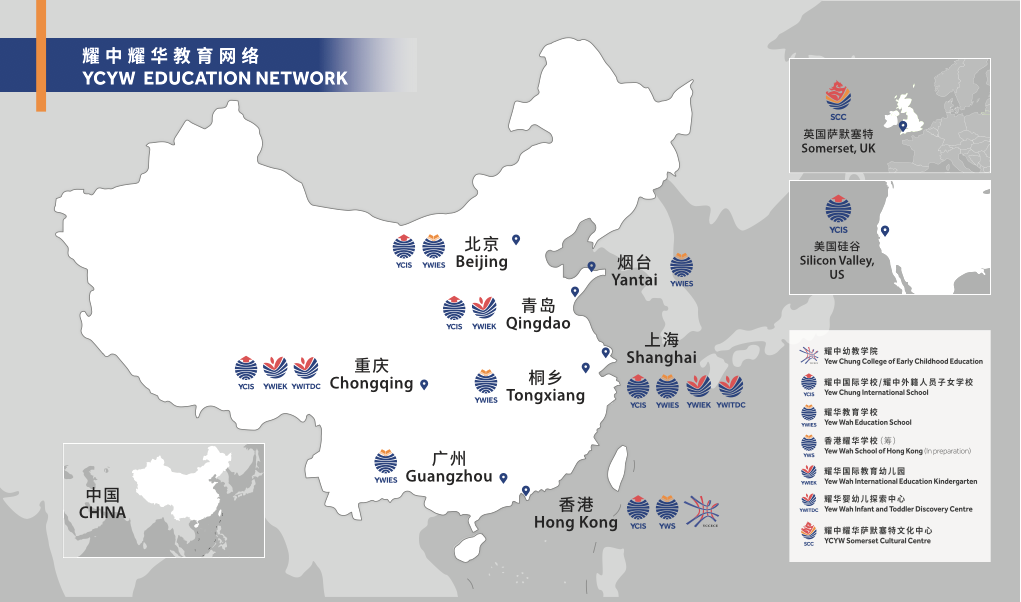文章目录[隐藏]
中文赛题:体育大型赛事的环境影响
每年,超级碗都会汇聚数百万人——从前往主办城市的球迷,到世界各地的观众。这一赛事创造了巨大的社会和经济价值,但同时也带来了显著的环境成本。航空出行、酒店住宿、能源使用、餐饮消费、废物产生以及大规模的转播活动,都使超级碗的环境足迹相当可观。
随着人们对可持续发展的关注不断增加,诸如超级碗这样的体育大型赛事正被要求更加环保。外部机构已经开发出模型和评分体系,用以从能源使用、废物管理、交通运输、碳补偿等多方面评估这些大型赛事的可持续性。
然而,尽管存在这些环境评分和丰富的数据,可持续性很少成为赛事决策(如主办地选择或基础设施建设)的关键驱动因素。这种脱节为构建新模型提供了机会——一个将生态影响作为核心考量的规划与选址模型。设想这样一个场景:主办城市不仅依据经济可行性和观众承载能力进行评估,还要考虑可再生能源潜力、现有基础设施效率以及交通可达性。这样的模型能使组织委员会在绩效、成本与可持续性之间实现可衡量的平衡。
积极推动体育赛事环境正向化的咨询机构(COMAP)聘请了你的团队作为可持续发展顾问,以评估并降低体育大型赛事的环境足迹。目标是了解这些赛事的生态影响,并探索如何通过规划变革来减少其环境损害。
要求
- 理解问题。以美国新奥尔良举办的第五十九届超级碗为基准,研究体育大型赛事的环境影响。
- 识别影响赛事可持续性的关键方面,如能源消耗、水资源使用、废弃物产生、温室气体排放等。这些领域可参考现有对超级碗赛事的环境影响评分指标。说明这些指标如何帮助你的团队理解该赛事的真实环境足迹。
- 考虑不同地点的差异。讨论赛事环境影响如何随举办地变化而变化,考虑因素包括气候、地理特征、交通基础设施、本地能源结构或其他环境问题。
- 建立模型。构建一个模型,用以仅基于环境因素决定下一届超级碗应在哪个城市举办。 在模型设计中,应明确哪些因素会驱动环境影响,以及地点特征如何造成差异。你的模型可以是定性或定量的。
- 应用模型。确定哪座城市应举办2029 年的超级碗(目前尚未确定举办地)。a. 美国已有 19 座城市曾举办超级碗。自国家橄榄球联盟(NFL)正式引入可持续性指标以来,仅以下城市举办过或即将举办:英格尔伍德(加州)、格兰岱尔(亚利桑那州)、拉斯维加斯(内华达州)、新奥尔良(路易斯安那州);以及未来已排期的圣克拉拉(加州)、英格尔伍德(加州)、亚特兰大(乔治亚州)。请将模型应用于这些城市,确定哪座城市在环境可持续性上最具优势。b. 选取三座拥有 NFL 球队但从未举办过超级碗的潜在城市。将模型应用于这三座城市,确定哪一个是最具环境可持续性的选择。
- 扩展模型并反思分析a. 扩展模型,以适用于其他类型的体育大型赛事。你的模型应能捕捉以下两类赛事之一的可持续性影响因素:b. 将扩展模型应用于其中一个大型赛事,并推荐合适的主办地。说明你的模型如何支持这一结论,并如何反映该赛事独特的可持续性挑战。c. 考虑基础设施投资、能源来源、交通方式变化对城市未来申办大型赛事的影响。指出能够帮助城市在短期内减少环境影响、且在经济与后勤上可行的策略并讨论这些策略如何提升城市的长期申办吸引力与可持续性评分。d. 讨论单场大型赛事(如超级碗)与多场或多项目比赛(如奥运会)在可持续性影响上的主要差异。
- 单项运动锦标赛(如世界杯、Copa America、一级方程式大奖赛、英国高尔夫公开赛等);
- 多项运动赛事(如奥运会、英联邦运动会、Invictus Games、世界运动会等)。
- 分享模型与结果。请撰写一封一至两页的信函,向美国国家橄榄球联盟 (NFL) 推荐您选择的 2029 年超级碗举办城市。在信中,请重点阐述您方案的环境优势,以说服 NFL 接受您的选择。请具体说明您的首选城市为何脱颖而出,以及它如何符合可持续发展目标。
您的PDF解决方案总页数不超过25页,应包含以下内容:
- 一页摘要;
- 目录;
- 完整解决方案;
- 一至两页的致 NFL 信件;
- 参考文献列表;
- AI 工具使用报告(如有,不计入页数限制)。
术语表
体育大型赛事(Sport Mega-Events):指具有显著经济、社会与环境影响的大型高知名度体育赛事。组委会(Organizing Committee):赛事管理机构,负责赛事的整体规划、协调与执行。单项运动锦标赛(Single-sport Championship Tournament):专注于单一运动项目的冠军赛制赛事。多项运动赛事(Multi-sport Competition):包含多个不同运动项目的综合性赛事,通常在多个场馆进行。
Problem B: Environmental Impact of Sport Mega-Events
Every year, the Super Bowl brings together millions of people – from fans traveling to the host city, to viewers tuning in from around the globe. This event generates enormous social and economic value, but it also comes with a significant environmental cost. With air travel, hotel stays, energy use, food consumption, waste generation, and massive broadcast operations, the Super Bowl’s environmental footprint is substantial.
As we grow more concerned about sustainability, large-scale sporting events or sport mega-events like the Super Bowl are being made more environmentally responsible. External organizations have developed models and scoring systems to rate the sustainability of these large-scale events based on many factors from energy use and waste management to transportation and carbon offsets.
While these environmental scores exist and a wealth of data is available on what event planners are doing to be eco-friendly, sustainability rarely drives key decisions such as where to host an event or how to design its required supporting infrastructure. This disconnect presents an opportunity to build a model where ecological impact is not just an afterthought, but a core driver of planning and location decisions. Imagine a scenario in which host cities are evaluated not only for their economic viability and fan capacity, but also for their renewable energy potential, existing infrastructure efficiency, and transportation accessibility. Such a model would enable organizing committees to balance performance, cost, and sustainability in a measurable way.
The Consulting Organization Making Athletics Planet positive (COMAP) has hired your team as sustainability consultants to assess and reduce the environmental footprint of sport mega-events. The goal is to understand the ecological impact of these events and explore how changes in event planning could make a difference.
Requirements
- Understand the Problem. Investigate the environmental impact of hosting a sport mega-event using Super Bowl LIV in New Orleans, USA as a baseline.
- Identify areas that impact the sustainability of this event such as energy consumption, water usage, waste generation, greenhouse gas emissions, or other environmental effects. These areas can be found in available existing metrics which have scored the environmental impact of Super Bowl LIX. Discuss how using these help your team gain an understanding of the true environmental footprint of this event.
- Consider how these impacts might differ in other locations. Discuss how the environmental impact may change based on location of the event by considering factors such as climate, geography, transportation infrastructure, local energy mixes, or other local environmental concerns.
- Create Your Model. Create a model to determine where to hold the next Super Bowl based completely on environmental concerns. When building the model, teams should consider what drives environmental impact and how location specific characteristics can make a difference. Keep in mind that your model may be qualitative or quantitative.
- Apply Your Model. Determine which city should host the Super Bowl in 2029, the next year currently without a confirmed location.a. There have been 19 total cities in the United States that have previously hosted the Super Bowl. Since the NFL started formally integrating sustainability metrics and environmental impact assessments, only Inglewood (California), Glendale (Arizona), Las Vegas (Nevada), and New Orleans (Louisiana) have hosted with Santa Clara (California), Inglewood (California) and Atlanta (Georgia) scheduled to host in the future. Out of these cities that have hosted, determine who should host again. Apply your model to a set of potential host cities within the United States and determine which would be the most environmentally sustainable choice.b. Data on cities that have not hosted the Super Bowl is harder to find. Consider three potential cities that have NFL teams and have never hosted. Apply your model to determine which would be the most environmentally sustainable choice.
- Expand Your Model and Reflect on Your Analysis.a. Extend your model to account for other types of sport mega-events. Revise your model to capture either the sustainability factors influencing the location ofb. Apply your expanded model to one of these large-scale sporting events and recommend an appropriate host location. Justify your choice by explaining how your model supports your conclusion and reflects the unique sustainability challenges of that broader event.c. Consider how changes in infrastructure investment, energy sourcing, and transportation modes could impact cities looking to make a future bid to host a large-scale sporting event. Identify strategies that can help cities minimize environmental impacts in the short term while remaining economically and logistically feasible and that can impact their long-term desirability to serve as host cities due to their high sustainability scores.d. Discuss the biggest environmental factors that influence sustainability in single-game large-scale sporting events like the Super Bowl compared to larger, multi-venue or multi-sport competitions.
- A single-sport championship tournament (such as the World Cup, Copa America, Formula 1 Grand Prix, the Open Championship, etc.), or
- A multi-sport competition (such as the Olympics, Commonwealth Games, Invictus Games, World Games, etc.).
- Share Your Model and Its Results Write a one-to-two-page letter to the NFL recommending your chosen host city for the Super Bowl in 2029. In your letter, persuade the organization to accept your choice by highlighting the environmental advantages associated with your proposal. Be specific about why your top choice stands out and how it aligns with sustainability goals.
Your PDF solution of no more than 25 total pages should include:
- One-page Summary Sheet
- Table of Contents
- Complete Solution
- One-to-two-page NFL Host City Letter
- References List
- Report on Use of AI Tools (if used; does not count toward the 25-page limit)
Glossary
- Sport mega-events: Large-scale, high-profile sporting events with significant economic, social, and environmental impacts.
- Organizing committee: Event-specific organization tasked with overall management, logistics, infrastructure, stakeholder coordination, and planning, under oversight of the awarding sport federation.
- Single-sport championship tournament: Event focused on one sport to determine a champion.
- Multi-sport competition: Event featuring multiple sports held across several venues with participants from different regions or countries.














